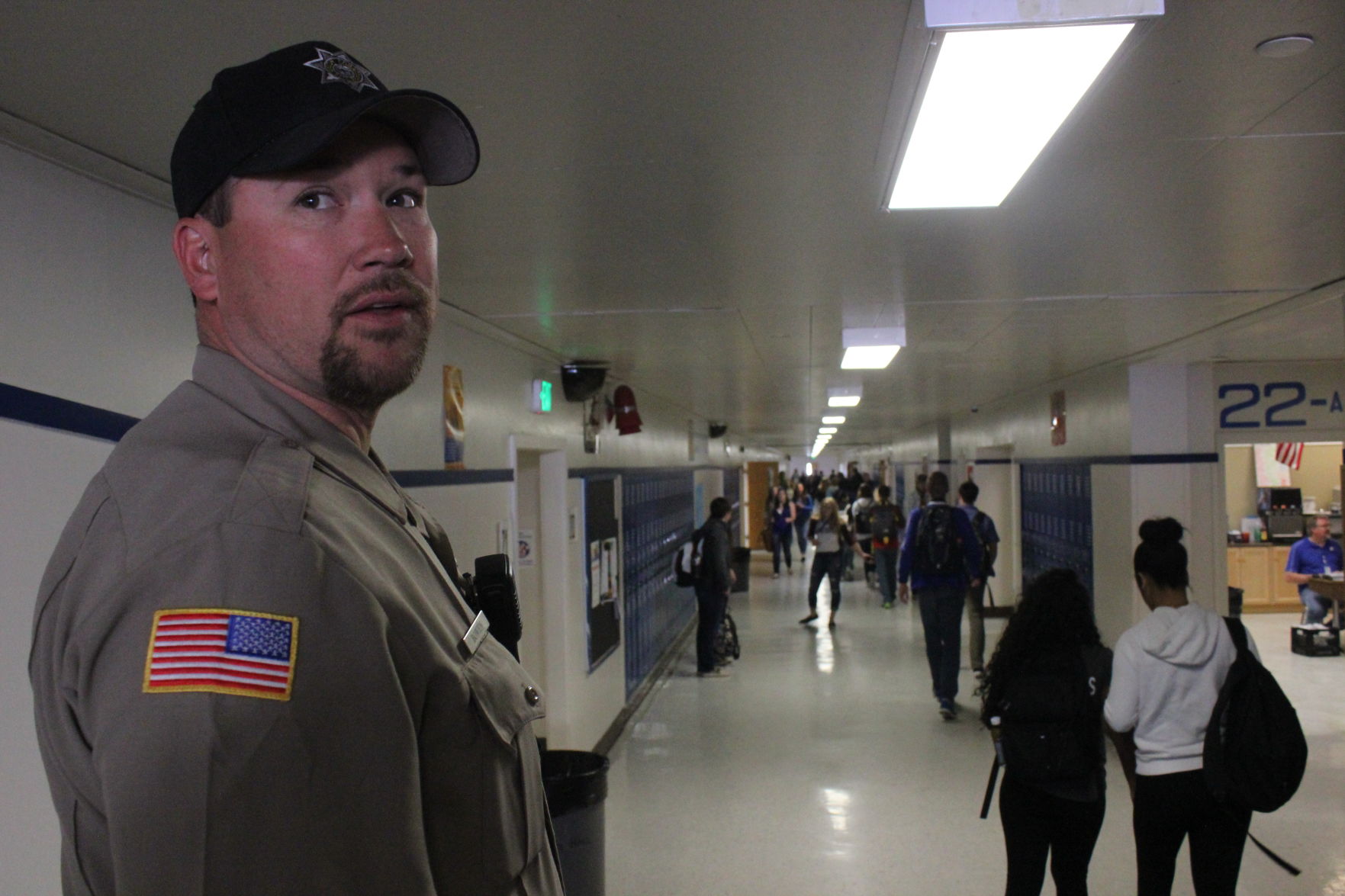Speakers at Cattleman’s Workshop in La Grande see Bright future for ranchers
Published 9:59 am Monday, January 26, 2009
A panel of nationally renowned speakers drew a record crowd of 350 ranchers from across Oregon, Idaho and Washington to the fifth-annual Cattleman’s Workshop last Saturday in La Grande.
Trending
“This workshop has grown every year, but this is by far the largest crowd we’ve ever had,” said Ron Rowan, an organizer of the Cattleman’s Workshop who works as the marketing manager at Beef Northwest Feeders headquartered in North Powder.
“I think we had 250 last year, and this year we had about 350,” Rowan said.
“This workshop is gaining a reputation as one of the best. We have nationally recognized speakers, and people in the cattle business recognize they can come to La Grande and not have to go all over the country to hear these guys.
Trending
“People are seeing that they can come here and get value to take home to their ranches,” Rowan said.
Several speakers talked about the benefits of cross-breeding programs, including recommendations on what breeds of bulls and cows add the most value to calf crops.
“Crossbred cows will return 24 to 25 percent more value to your ranch,” said Jerry Lipsey, vice president of the American Simmental Association.
“I want ranchers to be aware that crossbreeding has the potential to add wonderful value to the cattle herd of this nation,” Lipsey said.
In a presentation titled “Tailoring Cow-Calf Production for Today’s Beef Market,” Tom Brink of Swift-owned JBS Five Rivers Cattle Feeding Company also provided dollars and cents information describing how well-managed cross-breeding programs can benefit ranchers, feedlots, packers and beef consumers.
Brink said the current low demand, low calf-price market can be seen as an opportunity by some ranchers and as “something to cry about” by others.
Brink said complaining about the low prices won’t do any good, but by fine-tuning their herd management plans, ranchers can be poised to take advantage of the bright future he and other industry leaders see ahead.
JBS Five Rivers Cattle Feeders operates 10 feedlots in five states, mostly in the Midwest and Southwest, and sells cattle to four of the five major packers operating plants in the United States.
“We are margin operators,” Brink said. “We buy 35,000 head of cattle a week. We buy feeder cattle, buy grain and sell fed cattle. We have to be like you. We have to watch costs of everything we do.”
“We have to be cost-effective. That means we have to make sure our trucks are full when we ship cattle, and we have to produce an animal everybody along the supply chain wants.”
A majority of ranchers attending the meeting held their hands up indicating they raise smaller calves that come into a feedlot between 600 to 700 pounds and feed out to 1,000 to 1,200 pounds.
Brink cited data showing that slightly larger calves, which come in between 700 and 800 pounds and feed out to around 1,200 to 1,400 pounds, provide more of the higher value choice beef and other premiums that add value for both the rancher and the feedlot operator.
With today’s prices for feed corn and feed grains, Brink recommended ranchers select their breeding stock or artificial inseminate animals based at least in part on average daily gain and feed efficiency.
“Cattle that finished at heavier weights performed better,” at up to one-third higher average daily weight gain at 3.30 pounds a day for 169 days, compared to 2.93 pounds a day for 158 days for smaller steers, Brink said.
In the feedlot, Brink said bigger cattle do a lot better than smaller cattle brought in at the same weight – with larger steers gaining an average of 125 pounds more than smaller steers brought in at initial weight.
The difference in overall weight gain is so great, based on recent Texas AandM University research and feedlot records, that Brink said as a feedlot buyer he ought to be paying ranchers heifer prices for small feeder steers in the 600- to 700-pound range, compared to higher prices for the larger steers.
“There’s over $40 difference between the lighter finishing steers and the heavier finishing steers,” Brink said.
The only time smaller steers and heifers are worth more than larger steers is twice a decade (on average) when feed costs are so high that the weight gain of larger steers doesn’t offset the higher cost of feeding them.
That happened last summer when corn costs soared as high as $800 a ton.
But now corn has dipped below $400 a ton, and workshop speaker Don Killingsworth, a commodity trader with experience on the Chicago Board of Trade, said he’s betting corn will stay under $400 or thereabouts for the short term due to declining demand for ethanol.
Over the long run, however, Killingsworth said gas prices will rise again and when they do, demand for corn and other grains used to manufacture ethanol will rise accordingly unless the lawmakers recognize the threat of starvation in some parts of the world likely to result from shifting of corn and grain crops from food the ethanol.
Based on crude oil prices the last few months, Killingsworth projects corn prices will average about $3.70 a bushel over the next year.
He also predicts the national economy will see a drop of about 1.3 percent in the Gross Domestic Product this year, but will rebound in 2010 with a 2.3 percent increase in the GDP.
Brink recommends ranchers making their herd management plans consider the cost of corn and other feed, but he also advises ranchers to learn from the lessons of the past and avoid producing gigantic feeder steers in the 850- to 950-pound range, due to problems those huge animals cause at the packing plants.
“We would like our steers to finish at 1,300 to 1,400 pounds, but 1,500 pounds is too big. We’ve been there, done that, and we don’t need to go back to that,” Brink said. “That’s why there’s a discount on oversized animals.”
While animal size and weight gain are important factors affecting the bottom line for ranchers and feedlot operators, Brink said cattle health is the No. 1 problem in feedlots.
When cattle arrive from the ranch with undetected health problems that limit weight gain or spread through a feedlot affecting many cattle, feedlot operators lose money. And if a ranch gets a reputation for bringing in animals with health problems, Brink said buyers will steer clear of their animals or offer discount prices.
“We have the technology and know-how to get cattle healthy before they leave the farm or ranch,” Brink said, adding that lots of parasites and other bugs are prevalent at feedlots due to the large numbers of animals kept in close proximity, so it’s a place where animals that come in with marginal health are more likely to get sick.
“There’s a value difference of $22 a head between the best and worst health cattle,” Brink said. On a herd of 1,000 head ranchers who bring in health animals stand to make $22,000 more than those whose cattle aren’t as healthy.
The percentage of beef that grades choice also makes a big difference in the return ranchers and feedlots receive, Brink said,
Based the percentage of choice beef on a calf’s carcass, Brink said Angus/continental crossbred animals are best, preferably with 50 percent to 75 percent Angus, 25 – to 50 percent continental cattle, with no more than 25 percent other breeds.
He said the key to making money in the cattle business during good times and bad is to have good herd management and marketing plans.
“The key to creating more valuable feeder cattle is consistency,” Brink said.
The keys to achieving consistency, he said, including using the right combination of breeds, good genetic, health protection, parasite management, and raising cattle that can be age- and source-verified so they can be sold on the more lucrative export market in countries such as Japan, China, South Korea.
While depressed cattle markets seen in the worst of times, such as the 1980s, were the result of oversupply of cattle, Brink said the current situation has everything to do with politics and the national and global economic recession.
Consumers have cut back on the more expensive cuts of beef, but Brink said that trend is sure to change and beef demand will soon outstrip supply as the world climbs out of recession, which some prognosticator are saying could happen later this year or in 2010.









